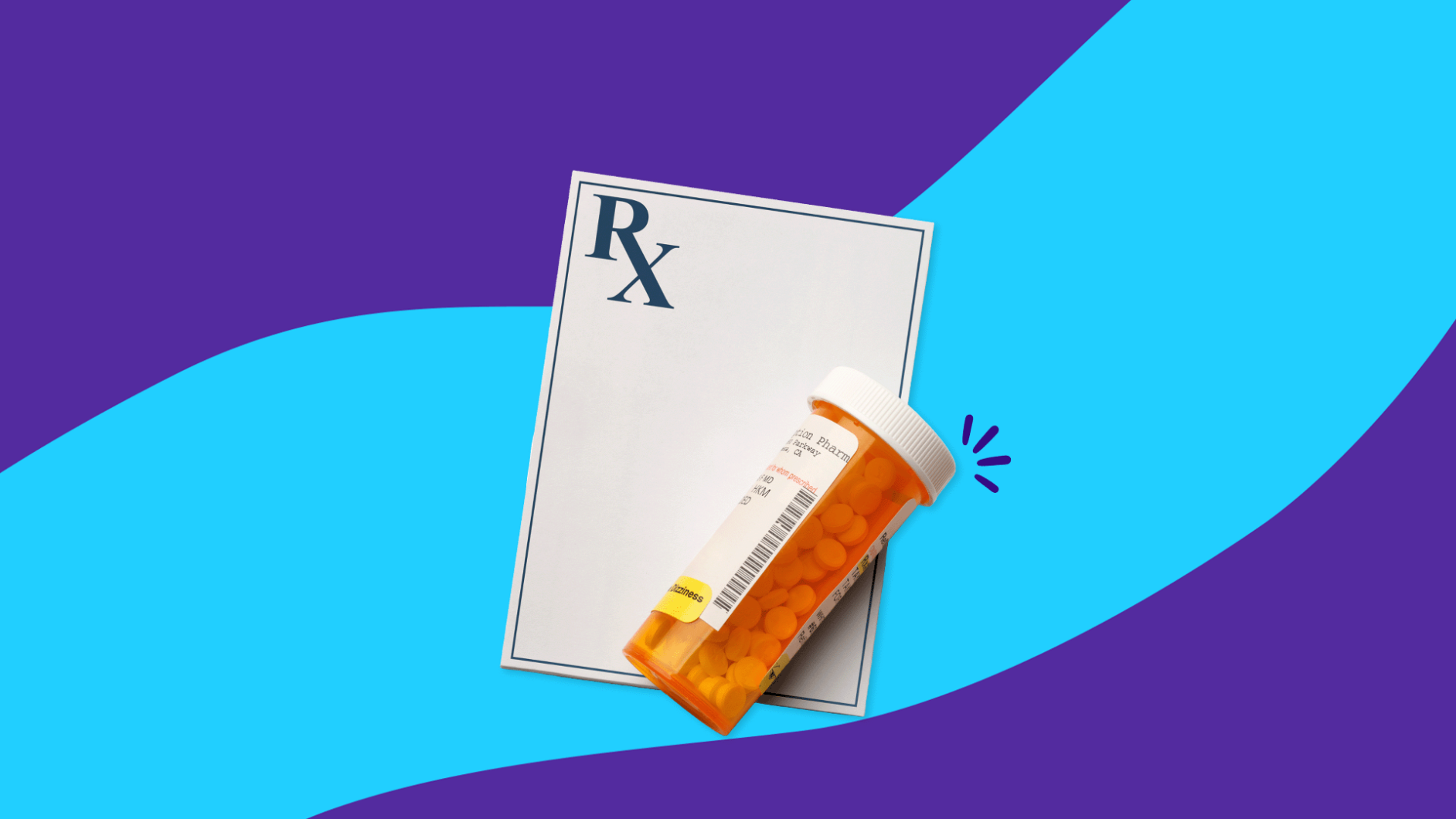Metformin is the first-line drug of choice prescribed by medical professionals for Type 2 diabetes treatment. It is also used off-label for insulin resistance in polycystic ovary syndrome (PCOS). A pill with a long history of use, metformin has stood the test of time by effectively lowering blood glucose levels and the risk of diabetic complications while not leading to weight gain. Metformin’s side effects are not trivial. However, drug interactions or certain coinciding health conditions can magnify their risk. Knowing these details could help keep a person safe while managing their diabetes.
RELATED: Signs metformin is not working
Key takeaways:
- Two of the most dangerous drug interactions with metformin do not involve traditional medications; they are alcohol and intravenous contrast dye for CT scans.
- Several prescription drugs that interact with metformin are prescribed to treat conditions commonly comorbid with diabetes, setting up a fairly frequent interaction scenario.
- The most concerning reaction resulting from metformin drug interactions is lactic acidosis, a life-threatening change in our body’s chemical balance that can be heightened by kidney, liver, or heart disease.
- Combining some medications with metformin can lead to lowering blood sugar levels too much, even into a hypoglycemic range.
- Hypoglycemia necessitates immediate action at home or, if necessary, with emergent care, and symptoms of lactic acidosis should also call for immediate emergency medical attention.
Metformin-drug interactions
Metformin and its brand name forms, Riomet and extended-release Glumetza, touch all the bases with their drug interactions. Members of several popular medication classes, such as antihypertensives and antibiotics, have significant metformin interaction potential.
Iodinated radiologic contrast
Intravenous iodine-based dye is often administered during CT scans to improve tissue differentiation on images, which helps radiologists determine what disease may be present. This radiologic contrast can result in impaired kidney function, known as renal insufficiency. Secondarily, renal insufficiency is a setup for lactic acidosis during metformin therapy, and some experts recommend not taking metformin for 48 hours after receiving iodinated radiologic contrast.
High levels of lactic acid in the bloodstream can be extremely dangerous. Confusion and shortness of breath accompany early metformin symptoms of nausea, vomiting, and diarrhea, which mimic common side effects. Ultimately, hypotension (low blood pressure) can develop at the critical stage of lactic acidosis, putting one’s life at risk. If these symptoms are noticed, seek emergency care immediately.
OCT inhibitors
One of the major cardiovascular complications of diabetes is coronary artery disease (CAD), so the two diseases often co-exist. If one has both conditions and is experiencing angina from heart disease, ranolazine may seem like a good option to reduce the frequency of chest pain. However, one needs to be aware of ranolazine’s interaction with metformin. By inhibiting the OCT2 transporter, it can raise metformin levels, leading to an increased risk of lactic acidosis. If prescribed ranolazine while taking metformin, ask for medical advice from a healthcare provider. They might recommend a lower dose of metformin as a safer option.
The over-the-counter antacid medication Tagamet (cimetidine) can also inhibit OCT2, causing metformin concentrations and risks to rise. A doctor may advise a different therapy for heartburn.
Angiotensin-converting enzyme inhibitors
Preferred agents for hypertension in the setting of diabetes, angiotensin-converting enzyme inhibitors (ACE inhibitors), are frequently given alongside metformin. This practice can be appropriate, but be aware that the likelihood of hypoglycemia and lactic acidosis may be higher. Small studies and case reports suggest an association between concurrent use of an ACE inhibitor and metformin and these negative effects. Common ACE inhibitors include the following:
Taking metformin together with an ACE inhibitor may continue to be recommended by a medical team. Close monitoring of glucose levels and blood tests may be recommended to look for hypoglycemia and early signs of lactic acidosis with this drug combination.
Nonsteroidal anti-inflammatory agents
Nonsteroidal anti-inflammatory agents, better known as NSAIDs, are extraordinarily common treatments for pain, inflammation, and fever. Members of the category include:
NSAIDs pose a risk to kidney function, and it is not uncommon to see a reduction in renal function during treatment. Accordingly, coupling NSAIDs with metformin could create a perfect storm. If an NSAID makes mildly diminished renal function much worse, the risk of lactic acidosis from metformin could escalate. A doctor may want to check blood tests for kidney function before and during treatment.
Beta-blockers
Heart disease and hypertension frequently coincide with diabetes. Therefore, beta-blockers are utilized frequently with metformin. Beta-blockers are helpful agents to control heart rates and lower blood pressure in CAD and congestive heart failure (CHF). Unfortunately, they can mask the symptoms of hypoglycemia, one of metformin’s adverse effects.
Metformin and other biguanides, by themselves, do not cause much hypoglycemia, but when used with other antidiabetic treatments, such as insulin and sulfonylureas, hypoglycemia risk is heightened. If taking a beta-blocker, early signs of low blood sugar, such as sweating, dizziness, and tachycardia (fast heartbeat), may not be experienced as reliably. Common beta-blockers include:
- Toprol XL (extended-release metoprolol)
- Coreg (carvedilol)
- Inderal LA (extended-release propranolol)
- Labetalol
- Tenormin (atenolol)
With this drug combination, closer blood sugar monitoring may be advised by a doctor. If hypoglycemia develops, fast-acting sugar pills, food, or drink should be taken. If unable to take anything orally, an emergency glucagon dose can be given by injection or nasally to raise glucose levels temporarily until an ambulance arrives. The convenience of brand-name nasal glucagon, Baqsimi, comes at a price, but try a SingleCare discount card for assistance.
Carbonic anhydrase inhibitors
This drug category probably does not sound familiar, but carbonic anhydrase inhibitors include Topamax (topiramate), a popular medicine for preventing migraines and seizures, and acetazolamide, one of the few drugs used for altitude sickness and off-label for pseudotumor cerebri (idiopathic intracranial hypertension). These agents reduce serum bicarbonate levels in the bloodstream. They can increase metformin levels, thereby potentially having two effects that elevate the risk of lactic acidosis in the setting of metformin therapy.
A healthcare provider may or may not advise continuing Topamax along with metformin. Additional lab monitoring for lactic acidosis development could be a reasonable strategy to enhance safety and peace of mind.
Lamictal
Lamictal (lamotrigine) is another anti-epileptic to watch out for in the setting of metformin therapy. It raises metformin concentrations, which can potentiate the diabetic drug’s adverse effects, including diarrhea, hypoglycemia, and lactic acidosis.
Talk to a healthcare provider if prescribed Lamictal or metformin. The medical advice could be to seek other drug treatment options for diabetes. These options may include glucagon-like peptide 1 (GLP1) receptor agonists, sodium-glucose cotransporter 2 (SGLT2) inhibitors, dipeptidyl peptidase 4 (DPP4) inhibitors, sulfonylureas, or glargine insulin.
Antibiotics
The cephalosporin antibiotic cephalexin similarly raises blood metformin concentrations, although the level of danger is not as great. As a result, side effects of metformin may be more likely, especially if one has reduced kidney function. Ask the prescribing provider if the dose of either medication should be adjusted or seek an alternative to cephalexin.
Quinolone antibiotics may be necessary for certain infections due to diabetes, but they can pose a challenge. At times, they increase the risk factors for hypoglycemia when used with metformin or other diabetic drugs. Still, in other instances, they can reduce the medication’s effectiveness, thereby promoting hyperglycemia (high blood sugar). A healthcare professional may recommend more frequent blood glucose checks when metformin is used with quinolones like Cipro (ciprofloxacin) and levofloxacin.
Selective serotonin reuptake inhibitors
First-line antidepressants, selective serotonin reuptake inhibitors (SSRIs), are frequently taken together with metformin in those with depression and Type 2 diabetes mellitus. SSRIs can magnify the hypoglycemia risk in this situation, but again, this is more likely to be an issue if other diabetes medications are being used in conjunction with metformin. For example, common SSRIs include:
- Celexa (citalopram)
- Zoloft (sertraline)
- Lexapro (escitalopram)
- Prozac (fluoxetine)
- Paxil (paroxetine)
Warfarin
Warfarin is a long-standing member of the anticoagulant class of drugs. Its blood-thinning effects can be diminished by metformin, putting users at risk for blood clots. A doctor may still want both medications to be taken and will closely monitor the international normalized ratio (INR) to watch the effectiveness of warfarin. The dosing of warfarin can be adjusted if necessary.
Metformin-food interactions
Taken at mealtime, metformin absorption, and effects are slowed. For this reason, the prescriber may want it taken with meals. One will still want to limit their carbohydrate intake by restricting bread, white potatoes, pasta, and sugars to help metformin achieve its mission of diabetes control.
Other metformin interactions
Clearly, there are a number of drugs that interact with metformin. The potential hazards do not end there. Heavy alcohol consumption and renal insufficiency pose risks with the drug as well.
Metformin and alcohol
Drinking an excessive amount of alcohol, either in the short-term or long-term, can raise lactic acid levels. Taken along with metformin, high levels of alcohol intake could elevate the risk of lactic acidosis. The risk warrants limiting or avoiding alcohol as determined by a doctor.
Metformin and kidney disease
Metformin is excreted by the kidney. If the kidneys are not working well, it makes sense that metformin levels will rise, along with the risk of adverse effects. Depending on the level of renal impairment, the metformin dose may need to be limited, or the drug could have to be avoided altogether.
Metformin and liver disease
Metformin reduces lactate absorption in the liver, raising lactate blood levels and thus increasing the risk of lactic acidosis for those with advanced stages of liver dysfunction. A doctor will determine if it is best to avoid metformin if advanced hepatic impairment is a concern.
Metformin and heart disease
Severe degrees of congestive heart failure are associated with poor tissue perfusion from reduced circulation. As a result, more lactic acid may be produced. This can be particularly bad news if coupled with metformin. However, if heart failure is stable and controlled, a medical provider may keep one on a dose of metformin.
Metformin and vitamin B12
Vitamin B12 absorption is inhibited by metformin. As a result, levels of this nutrient can drop, causing one to develop a vitamin B12 deficiency, putting one at risk of anemia and neurologic symptoms like tingling and memory loss. Typically, a daily vitamin B12 supplement or regular monitoring of vitamin B12 levels is recommended during metformin therapy.
How to minimize metformin interactions
Get on the same page as your healthcare provider to minimize metformin interactions. Make sure to review with them a list of prescription drugs, supplements, and over-the-counter medications currently being taken. Report alcohol consumption habits. Ensure that kidney, liver, and heart function have been monitored. If a CT scan is needed, check if iodinated contrast will be given and if a metformin dose needs to be altered. Most importantly, be willing to raise any concerns with the provider and then follow instructions on how to monitor or adjust a treatment plan.
When to talk to a healthcare provider about metformin interactions
As soon as one is prescribed metformin, ask about interactions with drugs, food, and other medical conditions. Likewise, during metformin therapy, ask about interactions again if a new medicine is prescribed or if habits or health conditions change. One can be their best advocate, and the healthcare team will always welcome active participation in diabetes care.
Sources
- Metformin: Drug information, UpToDate (2023)
- Glucophage (metformin) drug label, Food and Drug Administration (FDA) (2017)
- Metformin hydrochloride drug label, National Institutes of Health DailyMed (2020)
- Metformin, Mayo Clinic drugs and supplement (2023)











